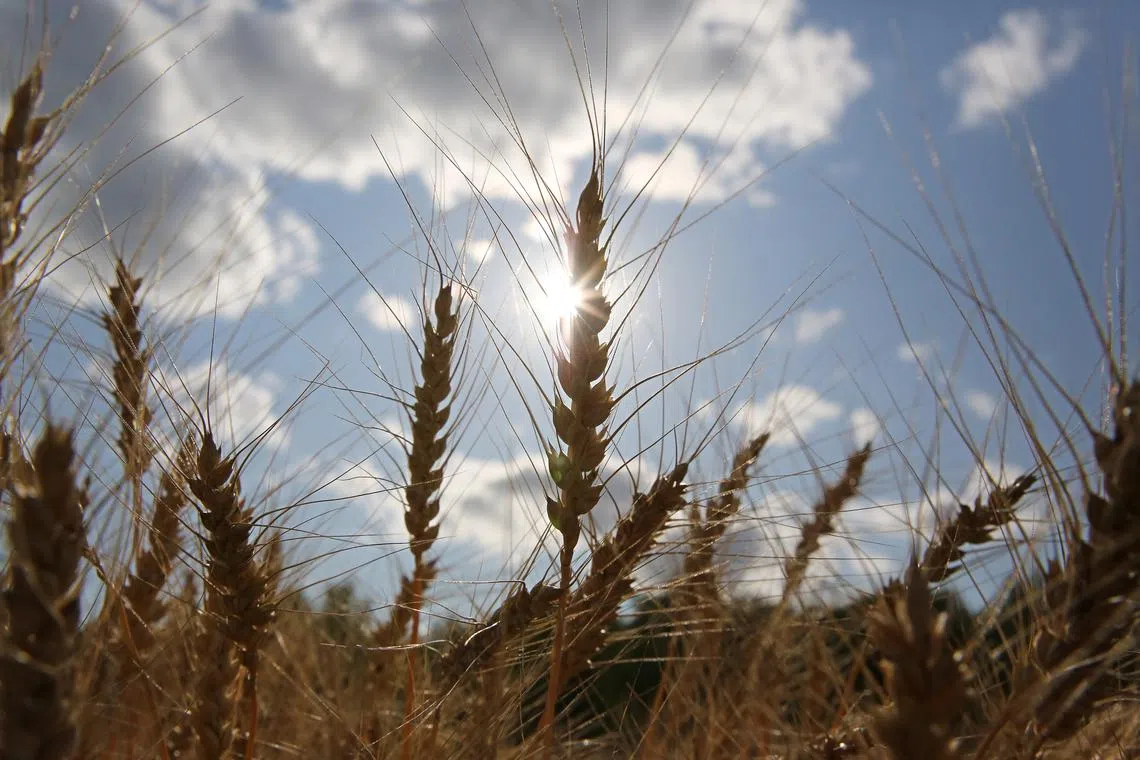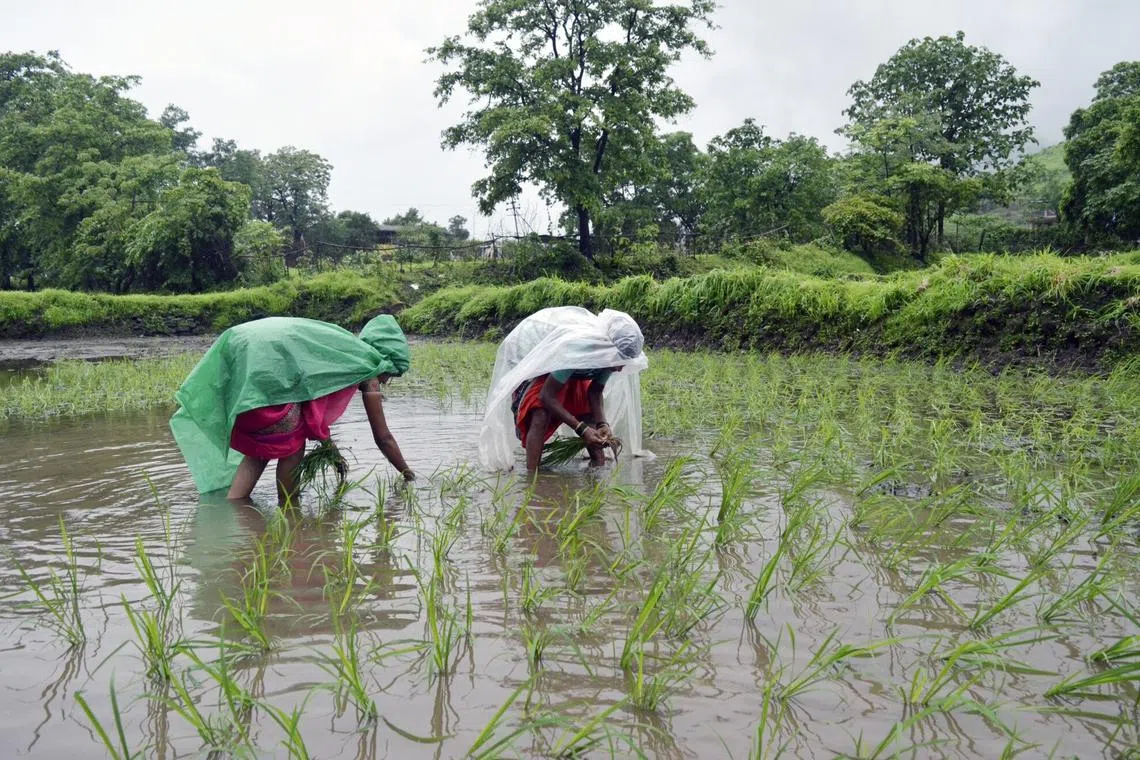Heat, war and export bans: Global food threats are on the rise
Sign up now: Get ST's newsletters delivered to your inbox

Grain harvests will be much smaller too after struggling with drought.
PHOTO: EPA-EFE
Follow topic:
LONDON – As scorching temperatures ravage farms
Last week, top rice exporter India banned some shipments of the commodity quit a deal that allowed Ukrainian grain to flow safely
On top of that is the recent arrival of the El Nino weather pattern that may cause further damage to agriculture.
All of this is renewing concerns about food security and prices, creating a risk that rampant inflation on supermarket shelves will stick around for longer. That would be a fresh blow to consumers, who were just starting to see some better news after a long-running squeeze on household budgets.
“We’re all still struggling under an inflationary regime,” said Professor Tim Benton, a food security expert at Chatham House in London. “And although inflation is tailing off, that doesn’t of course mean the prices are going down. It means they’re just going up more slowly.”
Extreme heat that is engulfing huge swathes of Asia, Europe and North America is just the latest challenge in what has been a rough year for farmers. They have had to grapple with bouts of extreme weather, including prolonged droughts, heavy rain and floods.
Right now, it is so hot in southern Europe that cows are producing less milk and tomatoes are being ruined. Grain harvests will be much smaller too after struggling with drought.
In Asia, the yields from China’s rice fields are at risk, and US conditions for growing crops in June were at their worst in more than three decades, before the Midwest got some rain relief. Prices for rice in Asia recently reached a two-year high as importers built up inventories.
While the full extent of the damage will depend on how long the unfavourable conditions persist, there are already clear signs of destruction in fruit and vegetables in southern Europe, which supplies much of the continent.
In Sicily, some tomatoes have ominous-looking black rings, the result of a so-called blossom end rot, when extreme weather renders plants calcium-deficient.
“They’re like burnt on the bottom,” said Mr Paddy Plunkett, head of global sourcing at importer Natoora who was sent a photo by a grower. “I’ve never seen it before.”
Across Italy, weather-related damage to agriculture will exceed 2022’s losses of €6 billion (S$8.9 billion), according to farmers group Coldiretti.
The temperatures have sped up ripening or caused heat burns on everything from grapes and melons, to apricots and aubergines. Bee activity and pollination is affected and wheat production is down, it said.
“This is not just a regular hot summer,” said Coldiretti agronomist Lorenzo Bazzana. “They say plants should adapt to the climate changes, but we are talking about cultures that evolved slowly over thousands of years, they cannot adjust to a climate that keeps changing so quickly and so dramatically.”
Beyond Europe’s vegetable stalls, the good news is the grains market – key to food security of the poorest and import-dependent nations – is still well supplied, thanks to record harvests of soya and corn in Brazil. Top wheat exporter Russia is set for another bumper crop.
But uncertainties are piling up. In an apt illustration, wheat fluctuated throughout last week in response to a flurry of news from the Black Sea.
It rose on the collapse of the export deal, before slipping back, then rose again as Russia threatened ships sailing to Ukraine ports. On Friday, it declined as Ukraine sought to restore the export deal.
More concerns stem from India’s steps to ban exports of non-basmati white rice to put a lid on inflation.
Retail rice prices in Delhi are up about 15 per cent in 2023, while the average nationwide price has gained 9 per cent, according to data from the food ministry. The government may extend the restrictions to other rice varieties, Nomura Holdings warned.
Elsewhere in Asia, Thailand is asking farmers to limit rice planting to only one crop this year amid drought risks.
Parts of the US are experiencing similar strains.
While rainfall levels have improved after hot and dry conditions earlier in 2023, the weather is expected to flip again across the Midwest this week and into early August, just as corn and soya bean crops go through critical development stages, said Mr Arlan Suderman, chief commodities economist at brokerage StoneX.

Retail rice prices in Delhi are up about 15 per cent this year, while the average nationwide price has gained 9 per cent.
PHOTO: BLOOMBERG
The Department of Agriculture forecasts that durum wheat output will fall 16 per cent in 2023, with other spring varieties down 1 per cent. The market will know just how bad the situation is when crop scouts hit the fields for the annual spring wheat tour in North Dakota this week.
Transport issues may compound the food security concerns. Water levels on the Mississippi and Ohio rivers are falling for a second straight year, raising the prospect of shipping problems on crucial freight routes.
“I would be surprised if global food prices do not start increasing again after over a year of decreasing,” said Ms Caitlin Welsh, a food expert at the Centre for Strategic and International Studies in Washington. “We’re experiencing multiple threats to agriculture markets.”
Back in Europe, droughts have meant that grains production in Italy, Spain and Portugal will be as much as 60 per cent lower than in 2022, contributing to possibly the European Union’s worst grain harvest in 15 years, according to farm lobby Copa and Cogeca.
It has called the situation “extremely worrying”.
“Prices are always stickier down than up,” said Dr Tom Halverson, chief executive of CoBank, a cooperative bank that works with rural businesses across the US. “It takes a lot longer and it’s a lot harder to squeeze inflation out.”
BLOOMBERG

